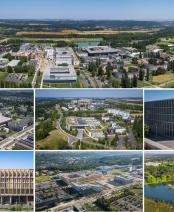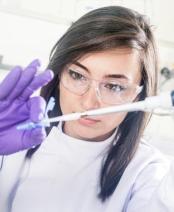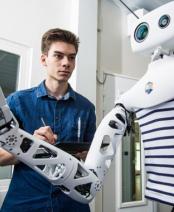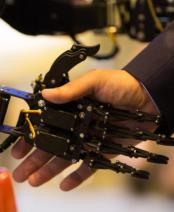PhD in Physics

Devoted to fundamental questions on the origin of matter, from elementary particles to the edge of the observable universe, theoretical and experimental physics of the two infinities is in strong interplay with plasma and laser physics, which allows in turn to explore the properties of matter in the most extreme conditions. Light and matter are also at the core of material sciences, nanosciences and nanotechnologies, which lead to the most important progresses in various field as electronics and communications, aerospace, energy and applications to biology and medicine.
The “physics” domain of IP Paris doctoral school reflects this variety by offering possibilities of PhD thesis work in theoretical or experimental fundamental physics, as well as in more applied fields based on the properties of light and matter, energy, or applications to biosciences.
- all physics domains (Optics, laser and plasma);
- Astrophysics
- Condensed Matter Physics
- Particle Physics;
- Quantum Physics
Theoretical Physics Center (CPHT)
Electronic structure of materials, quantum chromodynamics, mathematical physics, string theory, laser-plasma interaction, thermonuclear plasmas, astrophysical plasmas.
The Institut Photovoltaïque d’Île-de-France (IPVF)
Photovoltaic conversion; Photoelectron spectroscopy; perovskites; sputtering; Organometallic; chalcogenides
Leprince-Ringuet Laboratory for particle physics and astrophysics(LLR)
Elementary particles ; fundamental interactions ; astroparticles ; gamma-ray astronomy ; laser-plasma particle acceleration ; particle detectors
Applied Optics Laboratory (LOA)
Femtosecond laser pulses, laser-matter interaction, secondary particle and radiation sources and applications, ultrafast dynamics in condensed matter.
Laboratory for Optics and Biosciences (LOB)
Microbiology, molecular biology, structural and functional dynamics of biomolecules, multiphoton microscopy, femtosecond spectroscopy, cell nano-imaging, super-resolution, morphogenesis, biomechanics
Plasma Physics Laboratory (LPP)
Magnetic fusion, ITER, space plasmas, low temperature plasmas, turbulence, space engineering
Intense Lasers Laboratory (LULI)
Plasma, high-energy-density physics, ultra-high-intensity physics, secondary particle and radiation sources and applications, laser, LULI2000, APOLLON
Physics of Interfaces (PICM)
Plasma processes, thin films, nanomaterials, photovoltaics, sensors, batteries, instrumentation, Muller polarimetry, biomedical imaging, Raman, Scanning probe microscopy
Condensed Matter Physics (PMC)
Semiconductors, spintronics, transport and spectroscopy, complex geometries, localization, transport, disorder, electrocatalysis, single entities, functional films, materials chemistry, nanoparticles, active devices
Partner laboratories













